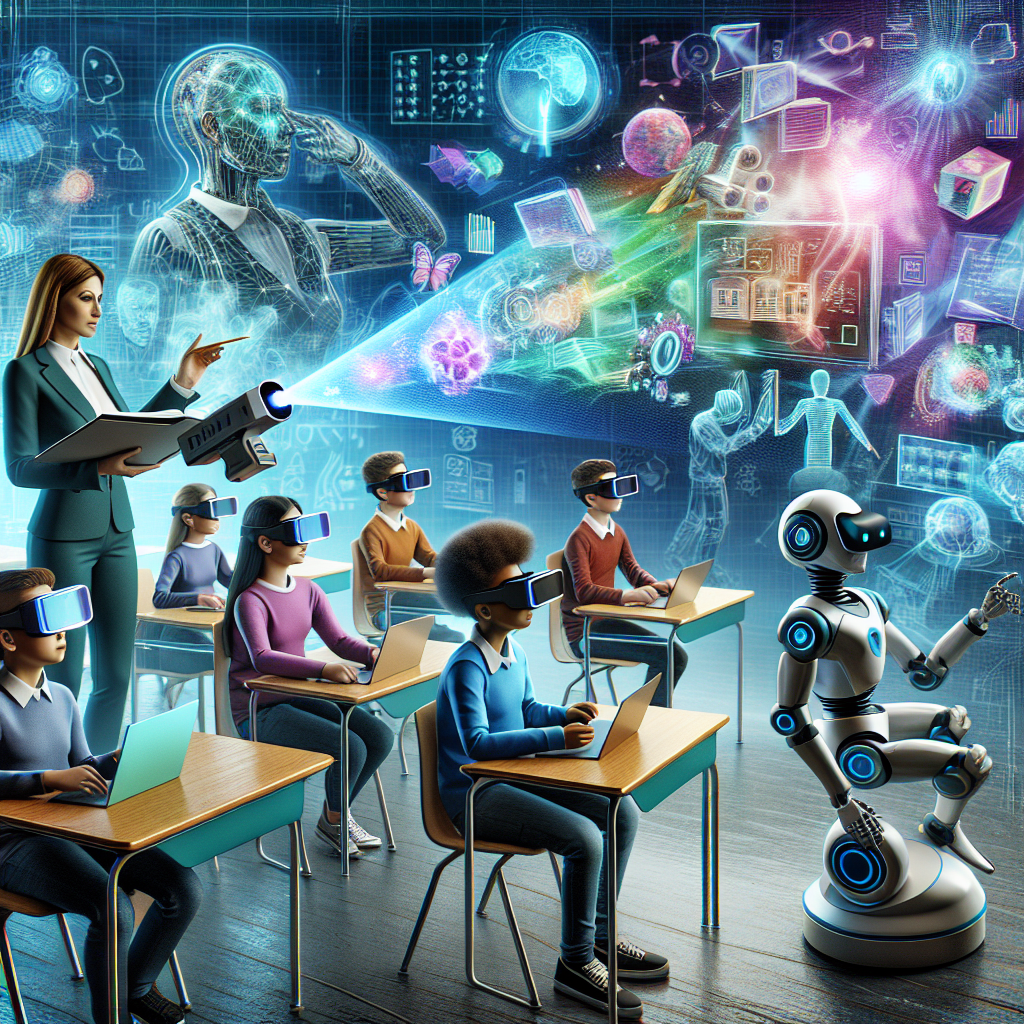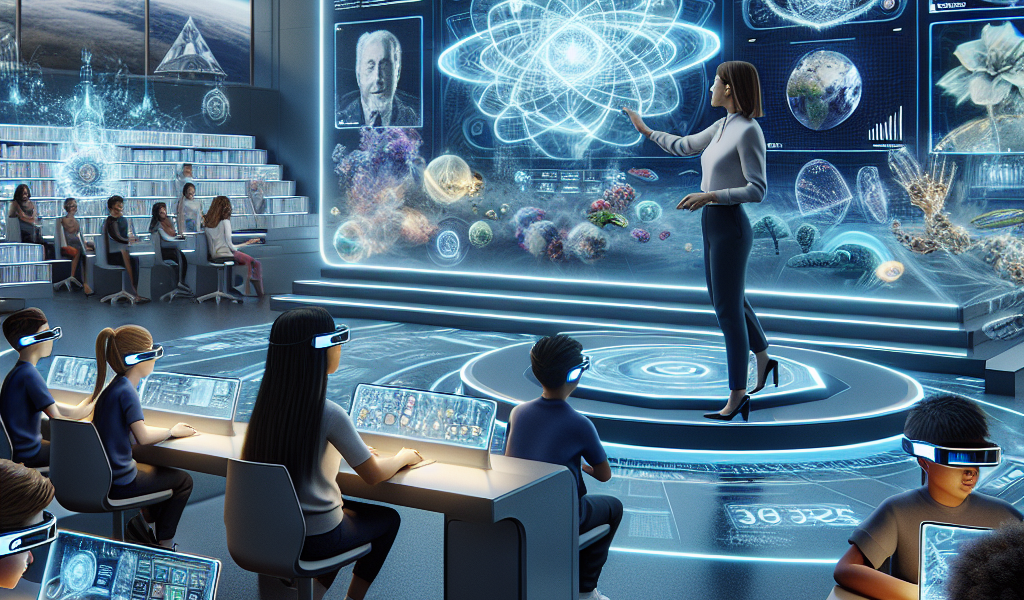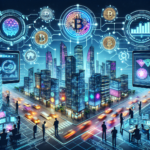-
Table of Contents
“Empowering Minds, Anywhere, Anytime: The Future of Education through E-Learning and Digital Classrooms.”
Introduction

The Future of Education: E-Learning and Digital Classrooms
The landscape of education is undergoing a transformative shift, driven by rapid advancements in technology and the increasing accessibility of digital tools. E-learning and digital classrooms are at the forefront of this evolution, offering innovative solutions to traditional educational challenges. These modern approaches provide flexible, personalized, and interactive learning experiences that cater to diverse student needs and learning styles. As the world becomes more interconnected, the integration of digital platforms in education is not only enhancing the quality of learning but also democratizing access to knowledge on a global scale. The future of education lies in harnessing the potential of e-learning and digital classrooms to create more inclusive, efficient, and effective educational environments.
The Rise of Virtual Classrooms: Transforming Traditional Education
The advent of technology has revolutionized various sectors, and education is no exception. The rise of virtual classrooms is transforming traditional education, offering unprecedented opportunities for both students and educators. As digital platforms become more sophisticated, the landscape of learning is shifting from physical classrooms to virtual environments, making education more accessible and flexible.
One of the most significant advantages of virtual classrooms is the ability to transcend geographical boundaries. Students from different parts of the world can now access the same quality of education, irrespective of their location. This democratization of education ensures that knowledge is no longer confined to the privileged few but is available to anyone with an internet connection. Consequently, this has led to a more inclusive educational environment, where diversity in thought and experience enriches the learning process.
Moreover, virtual classrooms offer a level of flexibility that traditional classrooms cannot match. Students can learn at their own pace, revisiting complex topics and advancing through material as they master it. This personalized approach to education caters to individual learning styles, thereby enhancing comprehension and retention. Additionally, the asynchronous nature of many online courses allows students to balance their studies with other commitments, such as work or family responsibilities.
The integration of multimedia elements in e-learning platforms further enhances the educational experience. Interactive videos, simulations, and gamified learning modules make complex concepts more understandable and engaging. These tools not only capture students’ attention but also facilitate active learning, where students are participants rather than passive recipients of information. This shift from traditional lecture-based teaching to interactive learning fosters critical thinking and problem-solving skills, which are essential in today’s fast-paced world.
However, the rise of virtual classrooms is not without its challenges. One of the primary concerns is the digital divide, which refers to the gap between those who have access to technology and those who do not. While e-learning platforms have the potential to democratize education, they can also exacerbate existing inequalities if access to necessary technology is not universal. Addressing this issue requires concerted efforts from governments, educational institutions, and private organizations to ensure that all students have the tools they need to succeed in a digital learning environment.
Another challenge is the potential for reduced social interaction, which is a crucial component of traditional education. Physical classrooms provide opportunities for students to develop interpersonal skills, collaborate on projects, and build relationships with peers and teachers. Virtual classrooms must find ways to replicate these social interactions to ensure a well-rounded educational experience. This can be achieved through virtual group projects, discussion forums, and live video sessions that encourage real-time communication and collaboration.
Despite these challenges, the benefits of virtual classrooms are undeniable. The COVID-19 pandemic has accelerated the adoption of e-learning, highlighting its potential to provide continuity in education during unprecedented times. As educational institutions adapt to this new normal, it is essential to leverage the strengths of digital classrooms while addressing their limitations.
In conclusion, the rise of virtual classrooms is transforming traditional education, offering a more accessible, flexible, and engaging learning experience. While challenges such as the digital divide and reduced social interaction must be addressed, the potential of e-learning to democratize education and foster critical skills is immense. As technology continues to evolve, so too will the landscape of education, paving the way for a future where learning knows no boundaries.
How Artificial Intelligence is Shaping the Future of E-Learning
Artificial intelligence (AI) is revolutionizing various sectors, and education is no exception. As e-learning and digital classrooms become increasingly prevalent, AI is playing a pivotal role in shaping the future of education. This transformation is not merely about integrating technology into traditional teaching methods; it is about reimagining the entire educational experience to make it more personalized, efficient, and accessible.
One of the most significant ways AI is impacting e-learning is through personalized learning experiences. Traditional classrooms often struggle to cater to the individual needs of each student due to the sheer number of pupils and the limitations of one-size-fits-all teaching methods. AI, however, can analyze vast amounts of data to understand each student’s learning style, strengths, and weaknesses. By doing so, it can tailor educational content to meet individual needs, thereby enhancing the learning experience. For instance, adaptive learning platforms use AI algorithms to adjust the difficulty level of tasks in real-time, ensuring that students are neither bored with too-easy material nor overwhelmed by content that is too challenging.
Moreover, AI-powered tools are making significant strides in automating administrative tasks, thereby freeing up educators to focus more on teaching and less on paperwork. Tasks such as grading assignments, tracking attendance, and even responding to frequently asked questions can be efficiently handled by AI systems. This automation not only saves time but also reduces the likelihood of human error, ensuring that administrative processes are more accurate and reliable.
In addition to personalizing learning and automating administrative tasks, AI is also enhancing the accessibility of education. For students with disabilities, AI-driven tools can provide invaluable support. Speech-to-text applications, for example, can assist students with hearing impairments, while text-to-speech software can aid those with visual impairments. Furthermore, AI can translate educational materials into multiple languages, breaking down language barriers and making education more inclusive.
Another area where AI is making a significant impact is in the realm of data analytics. Educational institutions are increasingly relying on data to make informed decisions, and AI is at the forefront of this trend. By analyzing data on student performance, engagement, and behavior, AI can provide educators with actionable insights. These insights can help identify at-risk students, allowing for timely interventions that can make a crucial difference in their academic journey. Additionally, data analytics can inform curriculum development, ensuring that educational content remains relevant and effective.
However, the integration of AI in e-learning is not without its challenges. Concerns about data privacy and security are paramount, as educational institutions must ensure that sensitive information is protected. Moreover, there is the issue of the digital divide; not all students have equal access to the technology required for AI-driven e-learning. Addressing these challenges will be crucial for the equitable implementation of AI in education.
Despite these hurdles, the potential benefits of AI in e-learning are too significant to ignore. As technology continues to evolve, so too will the ways in which it can be harnessed to improve education. The future of e-learning and digital classrooms is undoubtedly intertwined with the advancements in AI, promising a more personalized, efficient, and accessible educational experience for all. As we move forward, it will be essential to navigate the challenges thoughtfully while embracing the opportunities that AI presents, ensuring that the future of education is bright and inclusive.
The Role of Gamification in Enhancing Digital Learning Experiences
As the landscape of education continues to evolve, the integration of technology into learning environments has become increasingly prevalent. One of the most transformative elements in this digital shift is the incorporation of gamification into e-learning and digital classrooms. Gamification, the application of game-design elements in non-game contexts, has emerged as a powerful tool to enhance student engagement, motivation, and overall learning experiences.
The concept of gamification in education is not entirely new, but its implementation has gained significant traction with the rise of digital learning platforms. By leveraging elements such as points, badges, leaderboards, and challenges, educators can create a more interactive and immersive learning environment. This approach not only makes learning more enjoyable but also fosters a sense of achievement and competition among students, which can drive them to perform better.
One of the primary benefits of gamification is its ability to increase student engagement. Traditional classroom settings often struggle to maintain students’ attention, especially in an age where digital distractions are ubiquitous. However, gamified learning experiences can capture students’ interest by making educational content more dynamic and interactive. For instance, incorporating quizzes and interactive simulations can transform mundane lessons into exciting challenges that students are eager to tackle.
Moreover, gamification can significantly enhance motivation. The use of rewards and recognition in the form of points, badges, or certificates can provide students with tangible goals to strive for. This sense of accomplishment can be particularly motivating for students who may not be as engaged in traditional learning environments. Additionally, the competitive aspect of leaderboards can encourage students to put in extra effort to outperform their peers, further driving their motivation to learn.
Another critical aspect of gamification is its potential to personalize learning experiences. Digital platforms can track students’ progress and adapt the difficulty level of tasks based on their performance. This personalized approach ensures that students are neither bored with tasks that are too easy nor overwhelmed by challenges that are too difficult. By catering to individual learning paces and styles, gamification can help create a more inclusive and effective educational environment.
Furthermore, gamification can facilitate better retention of information. Studies have shown that active participation and engagement in learning activities can lead to improved memory retention. By incorporating game-like elements, educators can create scenarios where students actively apply their knowledge, thereby reinforcing their understanding of the subject matter. For example, role-playing games can immerse students in historical events or scientific experiments, making the learning experience more memorable and impactful.
However, it is essential to recognize that gamification is not a one-size-fits-all solution. The effectiveness of gamified learning experiences can vary depending on the subject matter, the age group of students, and the specific design of the gamification elements. Therefore, educators must carefully consider these factors when integrating gamification into their teaching strategies. Additionally, it is crucial to strike a balance between educational content and game elements to ensure that the primary focus remains on learning rather than just playing.
In conclusion, the role of gamification in enhancing digital learning experiences is multifaceted and holds great promise for the future of education. By increasing engagement, motivation, personalization, and retention, gamification can transform traditional learning environments into dynamic and effective digital classrooms. As technology continues to advance, the potential for innovative gamified learning experiences will only grow, paving the way for a more interactive and engaging educational landscape.
Overcoming Challenges in Implementing Digital Classrooms Globally
The rapid advancement of technology has ushered in a new era for education, with e-learning and digital classrooms becoming increasingly prevalent. However, the global implementation of these digital classrooms is not without its challenges. Overcoming these obstacles requires a multifaceted approach that addresses infrastructure, accessibility, and pedagogical adaptation.
One of the primary challenges in implementing digital classrooms globally is the disparity in technological infrastructure. In many developing countries, reliable internet access and modern devices are luxuries rather than norms. This digital divide creates a significant barrier to the widespread adoption of e-learning. To bridge this gap, governments and international organizations must invest in building robust internet infrastructure and providing affordable devices. Initiatives such as the United Nations’ Sustainable Development Goals emphasize the importance of inclusive and equitable quality education, highlighting the need for global cooperation in addressing these infrastructural deficiencies.
In addition to infrastructure, accessibility remains a critical issue. Even in regions with adequate technological resources, socio-economic factors can impede access to digital education. Students from low-income families may struggle to afford necessary devices or internet subscriptions. To mitigate this, some governments and non-profits have introduced programs to distribute free or subsidized devices and internet access to underprivileged students. For instance, during the COVID-19 pandemic, several countries launched emergency measures to ensure that students could continue their education remotely. These efforts, while commendable, need to be sustained and expanded to ensure long-term accessibility.
Another significant challenge is the need for pedagogical adaptation. Traditional teaching methods do not always translate effectively to digital platforms. Educators must be trained to utilize new technologies and adapt their teaching strategies to engage students in a virtual environment. Professional development programs focusing on digital literacy and innovative teaching methods are essential. Moreover, educational institutions must develop curricula that leverage the strengths of digital tools, such as interactive simulations and multimedia resources, to enhance learning outcomes.
Furthermore, the implementation of digital classrooms raises concerns about data privacy and security. With the increased use of online platforms, protecting students’ personal information becomes paramount. Educational institutions must adopt stringent data protection policies and ensure that digital tools comply with international privacy standards. Collaboration with cybersecurity experts can help in developing secure systems that safeguard sensitive information.
Despite these challenges, the potential benefits of digital classrooms are immense. E-learning can provide personalized learning experiences, allowing students to progress at their own pace and access a wealth of resources beyond the traditional classroom. It also offers opportunities for lifelong learning, enabling individuals to acquire new skills and knowledge throughout their lives. Additionally, digital classrooms can facilitate global collaboration, connecting students and educators from different parts of the world and fostering a more inclusive and diverse learning environment.
In conclusion, while the global implementation of digital classrooms presents several challenges, these can be overcome through concerted efforts to improve infrastructure, enhance accessibility, adapt pedagogical practices, and ensure data security. By addressing these issues, we can unlock the full potential of e-learning and create a more equitable and effective education system for future generations. The journey towards fully integrated digital classrooms is complex, but with sustained commitment and innovation, it is an achievable goal that promises to transform education on a global scale.
Conclusion
The future of education is increasingly leaning towards e-learning and digital classrooms, driven by advancements in technology and the need for flexible, accessible learning solutions. These digital platforms offer personalized learning experiences, greater accessibility, and the ability to cater to diverse learning styles. As technology continues to evolve, the integration of artificial intelligence, virtual reality, and other innovative tools will further enhance the educational landscape, making learning more interactive and effective. However, it is crucial to address challenges such as digital divide, data privacy, and the need for teacher training to fully realize the potential of e-learning and digital classrooms. Overall, the shift towards digital education promises to democratize learning and prepare students for a rapidly changing world.





